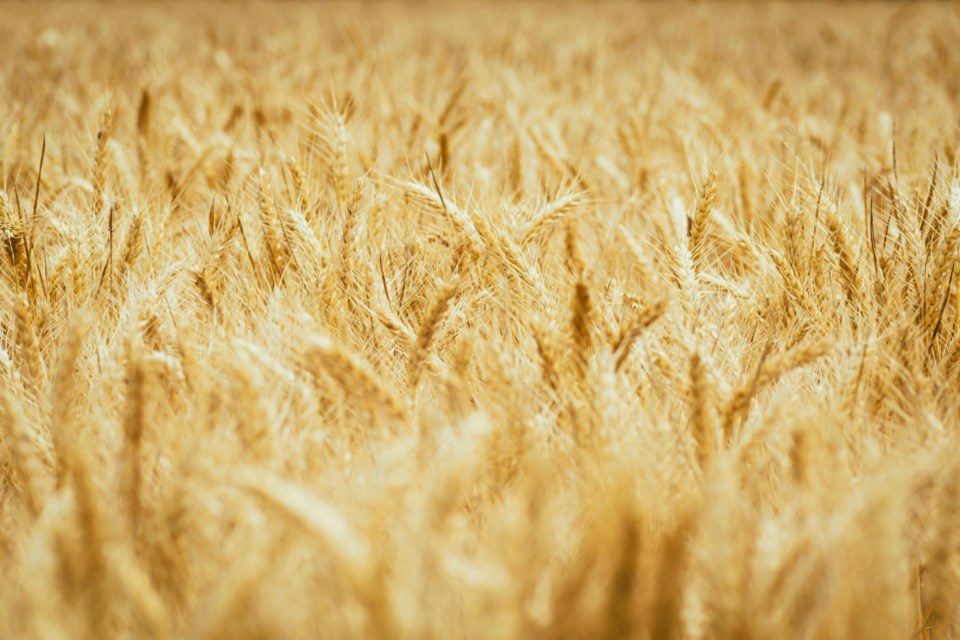REGINA — Warm and dry conditions helped producers make good harvest progress this week.
Harvest is now 91 per cent complete, which is up 12 per cent from last week. Progress remains above the five-year average of 83 per cent and the 10-year average which is 79 per cent. Once all crops are off, producers are hoping for lots of rain prior to freeze-up to increase soil moisture reserves.
Harvest is at 99 per cent complete southwest with a few acres of unharvested crops in the region. The southeast is in the homestretch of harvest as 94 per cent of crops have been combined. Harvest is 90 per cent complete in the west-central region, while the east-central is following closely at 88 per cent. The northwest and northeast have the most crops remaining in the field with 85 per cent and 81 per cent harvested, respectively.
All winter wheat, fall rye, triticale, field pea and lentil crops are off, while 99 per cent of all durum crops are in the bin. Most of the other spring-seeded cereal crops have been harvested, as 98 per cent of barley, 96 per cent of spring wheat, 94 per cent of oats and 92 per cent of canary seed crops are off. Harvest is winding down for mustard and chickpea crops as 98 per cent and 95 per cent of these crops have been combined, respectively. Producers are currently working to get later seeded oilseed crops harvested in good time, as 82 per cent of canola and 68 per cent of flax have been harvested. Finally, soybeans continue to be furthest behind as harvest progress sits at 56 per cent.
Some areas in the northern regions experienced delays from rainfall. The Glaslyn area received the most rainfall last week with 31 mm of precipitation, followed closely by the Meota and North Battleford areas which received 26 mm and 25 mm, respectively. The Rosthern area received 22 mm of rain, while the Duck Lake area received 20 mm. Both the Spruce Home and Turtleford areas also received notable moisture at 19 mm for both areas.
Topsoil moisture conditions are slightly down from last week. Cropland topsoil moisture is rated as 60 per cent adequate, 34 per cent short and six per cent very short. Hayland topsoil moisture currently sits at 50 per cent adequate, 35 per cent short and 15 per cent very short. Finally, pasture topsoil moisture continues to be the lowest as conditions are 43 per cent adequate, 37 per cent short and 20 per cent very short.
Crop yields in Saskatchewan vary between and within the six reporting regions. This is largely due to variable rainfall and weather conditions during the growing season. Provincially, the average yields for spring-seeded cereal crops is 46 bushels per acre for hard red spring wheat, 32 bushels per acre for durum, 62 bushels per acre for barley and 75 bushels per acre for oats. For oilseed crops, the average yield for canola is 33 bushels per acre, 688 pounds per acre for mustard, and 22 bushels per acre for flax. Average yields for legume crops are 35 bushels per acre for field peas, 1220 pounds per acre for lentils, 29 bushels per acre for soybeans, and 1431 pounds per acre for chickpeas.
Hard red spring wheat quality in Saskatchewan differs between regions due to factors such as growing season temperatures and moisture. This year, the average grades of Hard Red Spring Wheat in Saskatchewan are 61 per cent 1CW, 29 per cent 2CW, eight per cent 3CW, and two per cent CW Feed. This year's grades are slightly better than the five-year average grades which are 53 per cent 1CW, 31 per cent 2CW, 10 per cent 3CW, and six per cent CW Feed. This year's grades are also better than the 10-year average grades, which are 43 per cent 1CW, 33 per cent 2CW, 16 per cent 3CW, and nine per cent CW feed.
As more crops are harvested, there is less crop damage occurring. The main causes of crop damage last week were from wind blowing swathes around, wildlife and waterfowl.
Many producers are currently working to get the last of their crops off. The producers who have completed harvest are busy putting equipment away, drying grain, hauling bales, harrowing and spraying for weeds. Safety should continue to be a priority even as harvest efforts wind down. Producers are reminded to pay close attention when operating equipment near power lines and on dry stubble.




